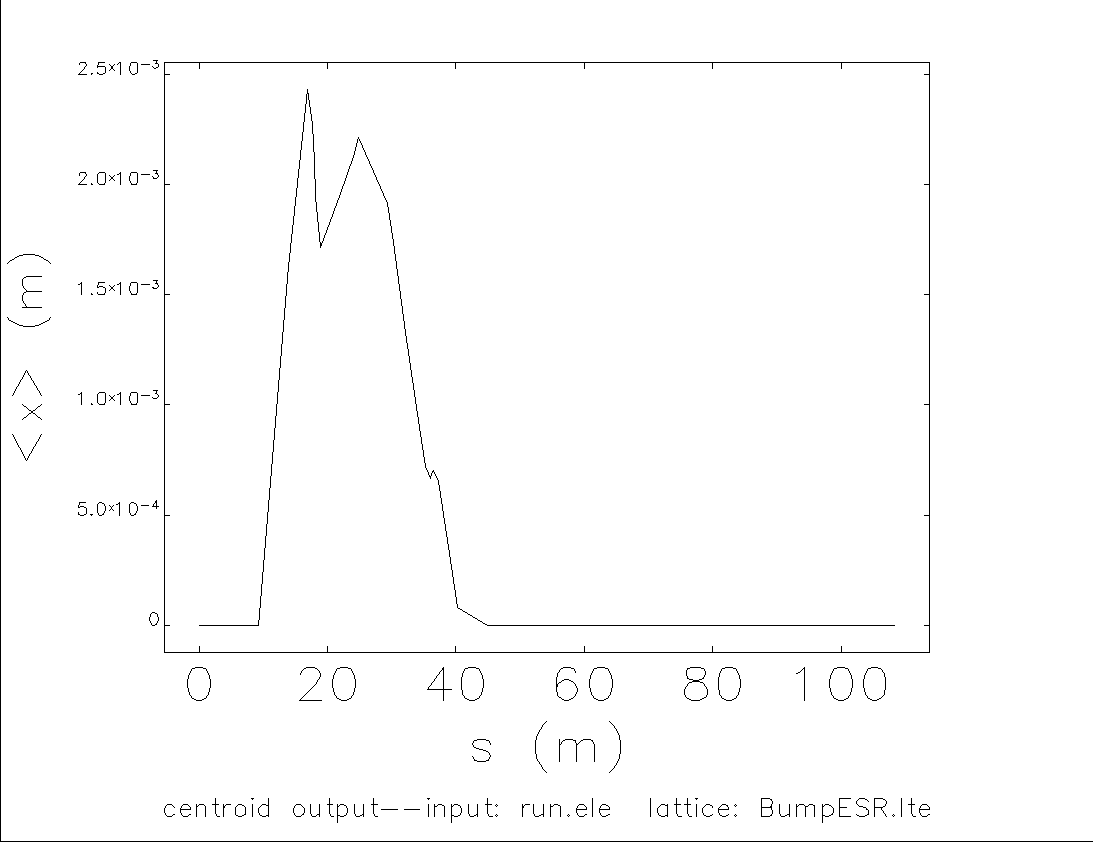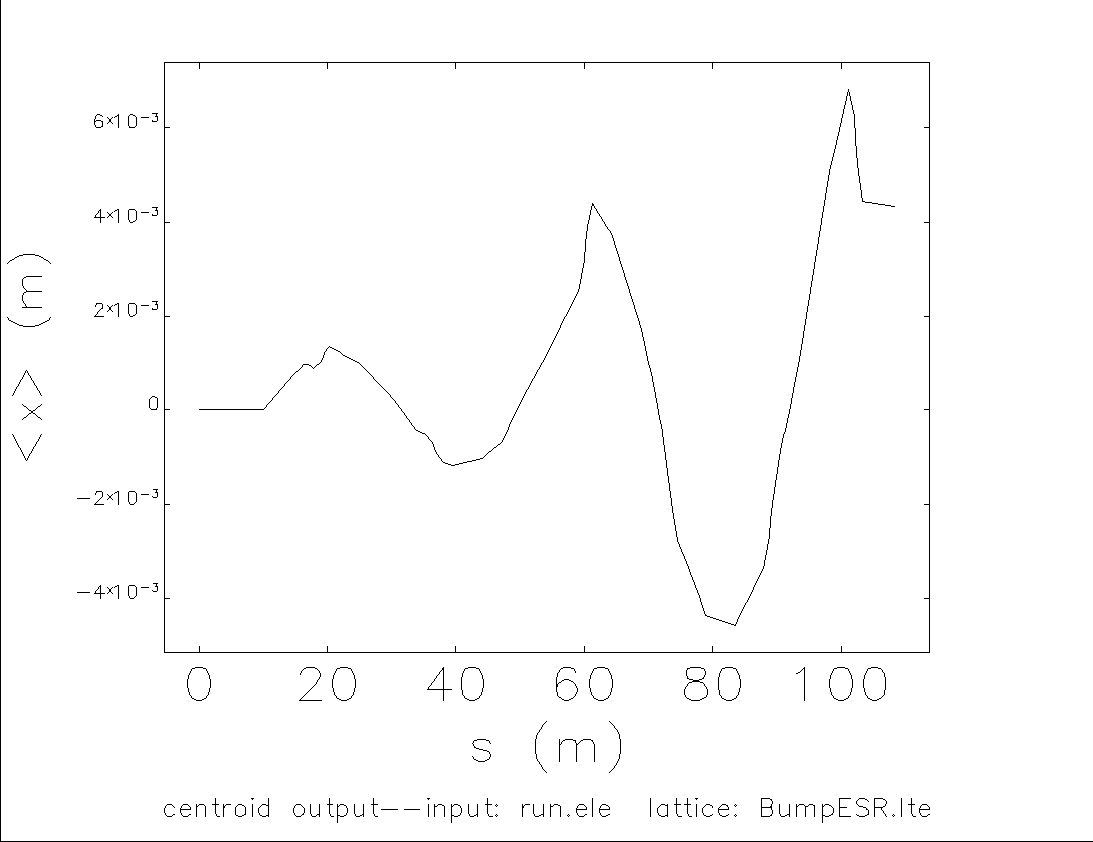Page 1 of 1
Kicker setting
Posted: 03 Sep 2018, 11:25
by SDastan
Hello Michael and all friends,
I have a problem and It will be great if you can help me. I want to put 4 local bumps in 2 dipole for hitting a defined target, so (x) should be offset during these bumps and then become zero. I put the value for these bumps in lattice and track particle in ELEGANT and MAD. You can see the results below:
Bumps in MAD act locally but in ELEGANT doesn't act locally so I decided to use ejectionOptimization example for defining the values of bumps in the ELEGANT, when I put bumps in the first of lattice the values of bumps become correct and bumps act locally,

- x-s.png (9.68 KiB) Viewed 14915 times
Re: Kicker setting
Posted: 03 Sep 2018, 11:29
by SDastan
but when I put bumps in their real place (2 of them are placed in the begining of lattice and two of them at the end of lattice) everything goes wrong.

- x-sfalse.png (10.49 KiB) Viewed 14914 times
It will be great if you can take a look at these files and said me what is my problem in my works.
regards,
Sara
Re: Kicker setting
Posted: 04 Sep 2018, 11:48
by michael_borland
Sara,
I'm guessing that you want a symmetric bump, so it is best to optimize for that explicitly. I did this and it seems to work as expected. See attached.
--Michael
Re: Kicker setting
Posted: 04 Sep 2018, 12:12
by SDastan
Dear Michael,
Thank you for your answer and sorry if I don't explain the problem in a good way.
Let me explain the problem in different way, when I put strengths of bumps equal to below values and do tracking in elegant and MAD, the results show different effect as I attached below.
kick of bump1=-0.000431
kick of bump2=0.00253
kick of bump3=0.00251
kick of bump4=-0.00431
I want to know, is there any way to have a similar results from both codes? (As I know the MAD result is more acceptable in this case)
regards,
Sara
Re: Kicker setting
Posted: 04 Sep 2018, 12:55
by michael_borland
Sara,
The issue seems to be that in elegant, you are using the fixed-length constraint on the orbit, whereas in MAD-X you are not. If I turn off this feature in elegant (using the fixed_length parameter of &closed_orbit), the results look like those from MAD-X.
Whenever there is dispersion at the location of the steering elements, you'll have this effect. It's particularly prominent in small rings, where the dispersion is large. In practice, it can be suppressed by changing the rf frequency, if there is freedom to do that.
--Michael
Re: Kicker setting
Posted: 05 Sep 2018, 03:29
by SDastan
Dear Michael,
I put the fixed_length=0 and it works, thank you so much for your help. As I understand from the manual of ELEGANT, fixed_length refers to momentum of particles, so when I turn on this command, I do tracking for on momentum particle, is it correct?
I will talk to RF group to see if we have this freedom to change the RF frequency or not?
regards,
Sara
michael_borland wrote: ↑04 Sep 2018, 12:55
Sara,
The issue seems to be that in elegant, you are using the fixed-length constraint on the orbit, whereas in MAD-X you are not. If I turn off this feature in elegant (using the fixed_length parameter of &closed_orbit), the results look like those from MAD-X.
bumpComparison.png
Whenever there is dispersion at the location of the steering elements, you'll have this effect. It's particularly prominent in small rings, where the dispersion is large. In practice, it can be suppressed by changing the rf frequency, if there is freedom to do that.
--Michael
Re: Kicker setting
Posted: 05 Sep 2018, 08:42
by michael_borland
Sara,
The fixed-length constraint does indeed affect the momentum of the particles on the closed orbit. With fixed_length=1, the momentum is allowed to change in order to keep the length of the orbit fixed, which means it is synchronized to the nominal rf frequency defined by the nominal circumference. With fixed_length=0, the momentum is kept fixed, which means the path length changes and therefore the rf frequency would have to change.
--Michael
Re: Kicker setting
Posted: 05 Sep 2018, 08:46
by SDastan
michael_borland wrote: ↑05 Sep 2018, 08:42
Sara,
The fixed-length constraint does indeed affect the momentum of the particles on the closed orbit. With fixed_length=1, the momentum is allowed to change in order to keep the length of the orbit fixed, which means it is synchronized to the nominal rf frequency defined by the nominal circumference. With fixed_length=0, the momentum is kept fixed, which means the path length changes and therefore the rf frequency would have to change.
--Michael
Thanks a lot Michael, now every thing looks clear.
regards,
Sara